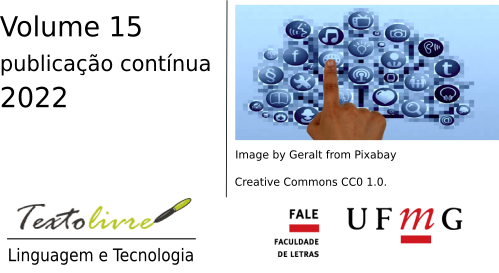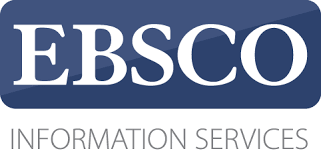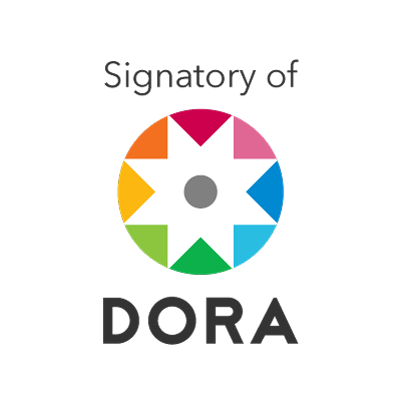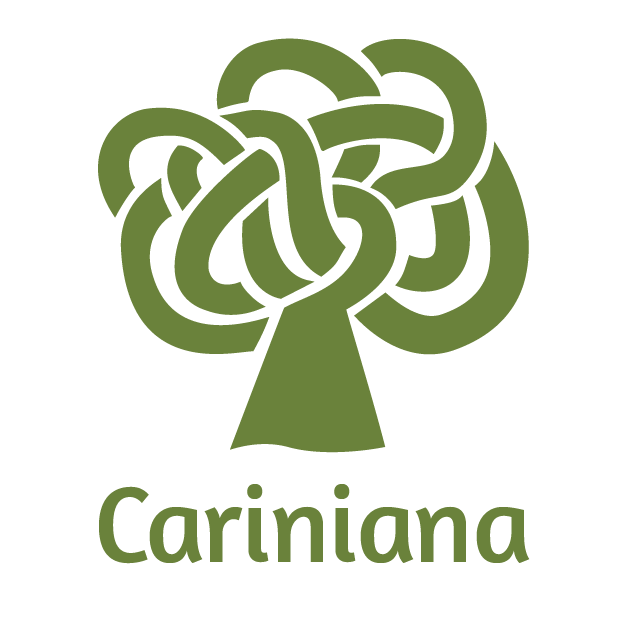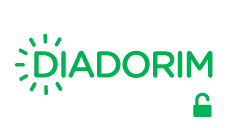Technology-enhanced mathematics learning in Europe
a literature review
DOI:
https://doi.org/10.35699/1983-3652.2022.40275Keywords:
Mathematics, Technologies, Secondary education, European Union, Literature reviewAbstract
The integration of technology in educational processes is a reality in different international education systems, being included in a transversal or specific way in the learning of the different subjects in different educational stages. This paper deals specifically addresses the way in which technology is used as a methodological tool in the teaching and learning of Mathematics at the Secondary Education in high school. Taking the European Union as a geographical context, a systematic review of the scientific literature hosted in the Web of Science database over the last five years is carried out. The results show that the scientific production is prolific, especially in the last two years and in the Spanish context; that the technological tools used are diverse; and that, regardless of these issues, they are considered to have a positive impact on the educational processes of Mathematics, for both students and teachers.
Downloads
References
ACAR, D.; TERTEMIZ, N. y TADEMIR, A. The effects of STEM training on the academic achievement of 4th graders in science and mathematics and their views on STEM training. International Electronic Journal of Elementary Education, v. 10, n. 4, p. 505-513, 2018. DOI: https://doi.org/10.26822/iejee.201843814.
ALABDULAZIZ, M. S. COVID-19 and the use of digital technology in mathematics education. en. Education and Information Technologies, v. 26, n. 6, p. 7609-7633, nov. 2021. ISSN 1360-2357, 1573-7608. DOI: 10.1007/s10639-021-10602-3. Disponible en: https://link.springer.com/10.1007/s10639-021-10602-3. Acceso en: 19 ago. 2022.
ALABDULAZIZ, M. S. y col. The effectiveness of the GeoGebra Programme in the development of academic achievement and survival of the learning impact of the mathematics among secondary stage students. en. Education and Information Technologies, v. 26, n. 3, p. 2685-2713, mayo 2021. ISSN 1360-2357, 1573-7608. DOI: 10.1007/s10639-020-10371-5. Disponible en: https://link.springer.com/10.1007/s10639-020-10371-5. Acceso en: 19 ago. 2022.
ALTANIS, I.; RETALIS, S. y PETROPOULOU, O. Systematic Design and Rapid Development of Motion-Based Touchless Games for Enhancing Students’ Thinking Skills. en. Education Sciences, v. 8, n. 1, pág. 18, ene. 2018. ISSN 2227-7102. DOI: 10.3390/educsci8010018. Disponible en: http://www.mdpi.com/2227-7102/8/1/18. Acceso en: 19 ago. 2022.
ARDIÇ, M. A. y İŞLEYEN, T. The Effect of Mathematics Instruction through Computer Algebra Systems on the Academic Achievements of Secondary Education Students: Turkey Example. Journal of Education and e-Learning Research, v. 5, n. 3, p. 165-173, 2018. ISSN 25180169, 24109991. DOI: 10.20448/journal.509.2018.53.165.173. Disponible en: http://asianonlinejournals.com/index.php/JEELR/article/view/39. Acceso en: 19 ago. 2022.
ARÍS, N. y ORCOS, L. Educational Robotics in the Stage of Secondary Education: Empirical Study on Motivation and STEM Skills. en. Education Sciences, v. 9, n. 2, pág. 73, abr. 2019. ISSN 2227-7102. DOI: 10.3390/educsci9020073. Disponible en: https://www.mdpi.com/2227-7102/9/2/73. Acceso en: 19 ago. 2022.
ATTARD, C. y HOLMES, K. An exploration of teacher and student perceptions of blended learning in four secondary mathematics classrooms. en. Mathematics Education Research Journal, nov. 2020. ISSN 1033-2170, 2211-050X. DOI: 10.1007/s13394-020-00359-2. Disponible en: http://link.springer.com/10.1007/s13394-020-00359-2. Acceso en: 19 ago. 2022.
BANO, M. y col. Mobile learning for science and mathematics school education: A systematic review of empirical evidence. en. Computers & Education, v. 121, p. 30-58, jun. 2018. ISSN 03601315. DOI: 10.1016/j.compedu.2018.02.006. Disponible en: https://linkinghub.elsevier.com/retrieve/pii/S0360131518300381. Acceso en: 19 ago. 2022.
BELTRÁN, P. y RODRÍGUEZ, C. Modelado e impresión en 3D en la enseñanza de las matemáticas: un estudio exploratorio. ReiDoCrea: Revista electrónica de investigación Docencia Creativa, p. 16-28, 2017. ISSN 2254-5883. DOI: 10.30827/Digibug.44193. Disponible en: http://hdl.handle.net/10481/44193. Acceso en: 19 ago. 2022.
BENÍTEZ, L. M.; SEVILLANO, M. L. y VÁZQUEZ, E. Effects on academic performance in secondary students according to the use of ICT. IJERI: International Journal of Educational Research and Innovation, n. 12, p. 90-108, jun. 2019. ISSN 2386-4303. DOI: 10.46661/ijeri.4045. Disponible en: https://www.upo.es/revistas/index.php/IJERI/article/view/4045. Acceso en: 19 ago. 2022.
BIRGIN, O. y ACAR, H. The effect of computer-supported collaborative learning using GeoGebra software on 11th grade students’ mathematics achievement in exponential and logarithmic functions. en. International Journal of Mathematical Education in Science and Technology, v. 53, n. 4, p. 872-889, abr. 2020. ISSN 0020-739X, 1464-5211. DOI: 10.1080/0020739X.2020.1788186. Disponible en: https://www.tandfonline.com/doi/full/10.1080/0020739X.2020.1788186. Acceso en: 19 ago. 2022.
BOGDAN, R. y GARCÍA-CARMONA, A. «De STEM nos gusta todo menos STEM». Análisis crítico de una tendencia educativa de moda. Enseñanza de las Ciencias. Revista de investigación y experiencias didácticas, v. 39, n. 1, p. 65-80, mar. 2021. ISSN 2174-6486, 0212-4521. DOI: 10.5565/rev/ensciencias.3093. Disponible en: https://ensciencias.uab.cat/article/view/v39-n1-toma-garcia. Acceso en: 19 ago. 2022.
COLOMO, E. y col. Percepción de estudiantes sobre el uso del videoblog como recurso digital en educación superior. Pixel-Bit, Revista de Medios y Educación, n. 58, 2020. ISSN 11338482, 21717966. DOI: 10.12795/pixelbit.74358. Disponible en: https://institucional.us.es/revistas/PixelBit/2020/74358.pdf. Acceso en: 19 ago. 2022.
COMISIÓN EUROPEA. Recomendación del Parlamento Europeo y del Consejo, de 18 de diciembre de 2006 , sobre las competencias clave para el aprendizaje permanente. es. [S.l.], dic. 2006. Disponible en: http://data.europa.eu/eli/reco/2006/962/oj/spa. Acceso en: 19 ago. 2022.
COMISIÓN EUROPEA. 2nd survey of schools: ICT in education : objective 1 : benchmark progress in ICT in schools, final report. LU: Publications Office, 2019. Disponible en: https://data.europa.eu/doi/10.2759/23401. Acceso en: 19 ago. 2022.
COMISIÓN EUROPEA. Recommended annual instruction time in full-time compulsory education in Europe, 2020/21. LU: Publications Office of the European Union, 2021. ISBN 9789294846068. Disponible en: https://data.europa.eu/doi/10.2797/14312. Acceso en: 19 ago. 2022.
CONSEJO EUROPEO. Recomendación del Consejo de 22 de mayo de 2018 relativa a las competencias clave para el aprendizaje permanente. [S.l.: s.n.], jun. 2018. Disponible en: https://eur-lex.europa.eu/legal-content/ES/TXT/PDF/?uri=CELEX:32018H0604(01)&from=SV.
CUEVAS, N. y col. Flipped classroom en tiempos de COVID-19: una perspectiva transversal. IJERI: International Journal of Educational Research and Innovation, n. 15, p. 326-341, dic. 2020. ISSN 2386-4303. DOI: 10.46661/ijeri.5439. Disponible en: https://www.upo.es/revistas/index.php/IJERI/article/view/5439. Acceso en: 19 ago. 2022.
CURTO, M. y col. Student Assessment of the Use of Kahoot in the Learning Process of Science and Mathematics. en. Education Sciences, v. 9, n. 1, pág. 55, mar. 2019. ISSN 2227-7102. DOI: 10.3390/educsci9010055. Disponible en: https://www.mdpi.com/2227-7102/9/1/55. Acceso en: 19 ago. 2022.
DEL CERRO, F. y MORALES, G. Application in Augmented Reality for Learning Mathematical Functions: A Study for the Development of Spatial Intelligence in Secondary Education Students. en. Mathematics, v. 9, n. 4, pág. 369, feb. 2021. ISSN 2227-7390. DOI: 10.3390/math9040369. Disponible en: https://www.mdpi.com/2227-7390/9/4/369. Acceso en: 19 ago. 2022.
DÍAZ, J. E. Aprendizaje de las Matemáticas con el uso de Simulación. Sophia, v. 14, n. 1, p. 22-30, abr. 2018. ISSN 2346-0806, 1794-8932. DOI: 10.18634/sophiaj.14v.1i.519. Disponible en: https://revistas.ugca.edu.co/index.php/sophia/article/view/519. Acceso en: 19 ago. 2022.
DIEGO-MANTECÓN, J. M.; BLANCO, T. y col. STEAM projects with KIKS format for developing key competences. es. Comunicar, v. 66, n. 29, p. 33-43, ene. 2021. ISSN 1134-3478, 1988-3293. DOI: 10.3916/C66-2021-03. Disponible en: https://www.revistacomunicar.com/index.php?contenido=detalles&numero=66&articulo=66-2021-03. Acceso en: 19 ago. 2022.
DIEGO-MANTECÓN, J. M.; GARCÍA-PIQUERAS, M. y col. Problemas en contextos reales para trabajar las matemáticas - Plataforma STEMforYouth. Sociedad de la Información, v. 58, p. 29-38, 2018.
FERNÁNDEZ-ENRÍQUEZ, R. y DELGADO-MARTÍN, L. Augmented Reality as a Didactic Resource for Teaching Mathematics. en. Applied Sciences, v. 10, n. 7, pág. 2560, abr. 2020. ISSN 2076-3417. DOI: 10.3390/app10072560. Disponible en: https://www.mdpi.com/2076-3417/10/7/2560. Acceso en: 19 ago. 2022.
GARCÍA, M. D. M.; ROMERO, I. M. y GIL, F. Efectos de trabajar con GeoGebra en el aula en la relación afecto-cognición. Enseñanza de las Ciencias. Revista de investigación y experiencias didácticas, v. 39, n. 3, p. 177-198, ago. 2021. ISSN 2174-6486, 0212-4521. DOI: 10.5565/rev/ensciencias.3299. Disponible en: https://ensciencias.uab.cat/article/view/v39-n3-garcia-romero-gil. Acceso en: 19 ago. 2022.
GARCÍA-MARTÍN, S. y CANTÓN-MAYO, I. Use of technologies and academic performance in adolescent students. es. Comunicar, v. 59, n. 27, p. 73-81, abr. 2019. ISSN 1134-3478, 1988-3293. DOI: 10.3916/C59-2019-07. Disponible en: https://www.revistacomunicar.com/index.php?contenido=detalles&numero=59&articulo=59-2019-07. Acceso en: 19 ago. 2022.
GIL-QUINTANA, J. y col. Learning Leaders: Teachers or Youtubers? Participatory Culture and STEM Competencies in Italian Secondary School Students. en. Sustainability, v. 12, n. 18, pág. 7466, sep. 2020. ISSN 2071-1050. DOI: 10.3390/su12187466. Disponible en: https://www.mdpi.com/2071-1050/12/18/7466. Acceso en: 19 ago. 2022.
GÓMEZ-GARCÍA, M. y col. Technological Factors That Influence the Mathematics Performance of Secondary School Students. en. Mathematics, v. 8, n. 11, pág. 1935, nov. 2020. ISSN 2227-7390. DOI: 10.3390/math8111935. Disponible en: https://www.mdpi.com/2227-7390/8/11/1935. Acceso en: 19 ago. 2022.
GONZÁLES, A. Integración de las tecnologías digitales en el área de matemática a través del Proyecto MILAGE. In: ACTAS XVIII Congreso Internacional de Investigación Educativa: Interdisciplinaridad y transferência. [S.l.: s.n.], 2017. p. 171-179.
GUILLÉN-GÁMEZ, F. D.; ÁLVAREZ-GARCÍA, F.J. y MALDONADO, I. Digital tablets in the music classroom: A study about the academic performance of students in the BYOD context. en. Journal of Music, Technology & Education, v. 11, n. 2, p. 171-182, sep. 2018. ISSN 1752-7066, 1752-7074. DOI: 10.1386/jmte.11.2.171_1. Disponible en: https://www.ingentaconnect.com/content/10.1386/jmte.11.2.171_1. Acceso en: 19 ago. 2022.
GUILLÉN-GÁMEZ, F. D.; MAYORGA-FERNÁNDEZ, M. J.; BRAVO-AGAPITO, J. y col. Analysis of Teachers’ Pedagogical Digital Competence: Identification of Factors Predicting Their Acquisition. en. Technology, Knowledge and Learning, v. 26, n. 3, p. 481-498, 2021a. ISSN 2211-1662, 2211-1670. DOI: 10.1007/s10758-019-09432-7. Disponible en: https://link.springer.com/10.1007/s10758-019-09432-7. Acceso en: 19 ago. 2022.
GUILLÉN-GÁMEZ, F. D.; MAYORGA-FERNÁNDEZ, M. J. y RAMOS, M. Examining the Use Self-perceived by University Teachers about ICT Resources: Measurement and Comparative Analysis in a One-way ANOVA Design. Contemporary Educational Technology, v. 13, n. 1, p. 1-13, 2021b. ISSN 1309517X. DOI: 10.30935/cedtech/8707. Disponible en: https://www.cedtech.net/article/examining-the-use-self-perceived-by-university-teachers-about-ict-resources-measurement-and-8707. Acceso en: 19 ago. 2022.
HILLMAYR, D. y col. The potential of digital tools to enhance mathematics and science learning in secondary schools: A context-specific meta-analysis. en. Computers & Education, v. 153, pág. 103897, ago. 2020. ISSN 03601315. DOI: 10.1016/j.compedu.2020.103897. Disponible en: https://linkinghub.elsevier.com/retrieve/pii/S0360131520300968. Acceso en: 19 ago. 2022.
HOSSEIN-MOHAND, H. y col. Uses and Resources of Technologies by Mathematics Students Prior to COVID-19. en. Sustainability, v. 13, n. 4, pág. 1630, feb. 2021. ISSN 2071-1050. DOI: 10.3390/su13041630. Disponible en: https://www.mdpi.com/2071-1050/13/4/1630. Acceso en: 19 ago. 2022.
IGLESIAS, L. M.; PASCUAL, I. y ARTEAGA-MARTÍNEZ, B. El aprendizaje del álgebra en Educación Secundaria: las estrategias metacognitivas desde la tecnología digital. es. Dialogia, n. 36, p. 49-72, dic. 2020. ISSN 1983-9294. DOI: 10.5585/dialogia.n36.18279. Disponible en: https://periodicos.uninove.br/dialogia/article/view/18279. Acceso en: 19 ago. 2022.
JESIONKOWSKA, J.; WILD, F. y DEVAL, Y. Active Learning Augmented Reality for STEAM Education—A Case Study. en. Education Sciences, v. 10, n. 8, pág. 198, ago. 2020. ISSN 2227-7102. DOI: 10.3390/educsci10080198. Disponible en: https://www.mdpi.com/2227-7102/10/8/198. Acceso en: 19 ago. 2022.
JIMÉNEZ, C. y col. Digital Escape Room, Using Genial.Ly and A Breakout to Learn Algebra at Secondary Education Level in Spain. en. Education Sciences, v. 10, n. 10, pág. 271, oct. 2020. ISSN 2227-7102. DOI: 10.3390/educsci10100271. Disponible en: https://www.mdpi.com/2227-7102/10/10/271. Acceso en: 19 ago. 2022.
JUÁREZ, J. A.; CHAMOSO, J. M. y GONZÁLEZ, M. T. Interacción en foros virtuales al integrar modelización matemática para formar ingenieros. Enseñanza de las Ciencias. Revista de investigación y experiencias didácticas, v. 38, n. 3, p. 161-178, nov. 2020. ISSN 2174-6486, 0212-4521. DOI: 10.5565/rev/ensciencias.3041. Disponible en: https://ensciencias.uab.cat/article/view/v38-n2-juarez-chamoso-gonzalez. Acceso en: 19 ago. 2022.
KIM, H. y KE, F. Effects of game-based learning in an OpenSim-supported virtual environment on mathematical performance. en. Interactive Learning Environments, v. 25, n. 4, p. 543-557, mayo 2017. ISSN 1049-4820, 1744-5191. DOI: 10.1080/10494820.2016.1167744. Disponible en: https://www.tandfonline.com/doi/full/10.1080/10494820.2016.1167744. Acceso en: 19 ago. 2022.
KRAMARENKO, T. H.; PYLYPENKO, O. S. y ZASELSKIY, V. Prospects of using the augmented reality application in STEM-based Mathematics teaching. Educational Dimension, v. 1, n. 53, p. 199-218, dic. 2019. ISSN 27084612, 27084604. DOI: 10.31812/educdim.v53i1.3843. Disponible en: https://journal.kdpu.edu.ua/ped/article/view/3843. Acceso en: 19 ago. 2022.
LINDE-VALENZUELA, T.; GUILLEN-GAMEZ, F. D. y DEVITT, A. Digital Literacy of Teachers, Families, and Students for Virtual Participation in School: A Multiple Comparison Analysis. IEEE Revista Iberoamericana de Tecnologias del Aprendizaje, v. 17, n. 1, p. 1-8, feb. 2022. ISSN 1932-8540, 2374-0132. DOI: 10.1109/RITA.2022.3149800. Disponible en: https://ieeexplore.ieee.org/document/9706454/. Acceso en: 19 ago. 2022.
LINO, M. y CHAPARRO, R. Revisión sistemática del uso de tecnología para la enseñanza-aprendizaje de la estadística. Revista Interuniversitaria de Investigación en Tecnología Educativa, v. 12, p. 175-199, 2022. ISSN 2529-9638. DOI: 10.6018/riite.501531. Disponible en: https://revistas.um.es/riite/article/view/501531. Acceso en: 19 ago. 2022.
LÓPEZ, J. y col. Formative Transcendence of Flipped Learning in Mathematics Students of Secondary Education. en. Mathematics, v. 7, n. 12, p. 12-26, dic. 2019. ISSN 2227-7390. DOI: 10.3390/math7121226. Disponible en: https://www.mdpi.com/2227-7390/7/12/1226. Acceso en: 19 ago. 2022.
MAASS, K. y col. The Role of Mathematics in interdisciplinary STEM education. en. Mathematics Education, v. 51, n. 6, p. 869-884, nov. 2019. ISSN 1863-9690, 1863-9704. DOI: 10.1007/s11858-019-01100-5. Disponible en: http://link.springer.com/10.1007/s11858-019-01100-5. Acceso en: 19 ago. 2022.
MARBÁN, J. M. y col. Primary and Secondary Students’ Usage of Digital Platforms for Mathematics Learning during the COVID-19 Outbreak: The Case of the Gaza Strip. en. Mathematics, v. 9, n. 2, pág. 110, ene. 2021. ISSN 2227-7390. DOI: 10.3390/math9020110. Disponible en: https://www.mdpi.com/2227-7390/9/2/110. Acceso en: 19 ago. 2022.
MARTÍNEZ-GARRIDO, C. Impacto del uso de los recursos tecnológicos en el rendimiento académico. Innoeduca. International Journal of Technology and Educational Innovation, v. 4, n. 2, p. 138-149, nov. 2018. ISSN 2444-2925. DOI: 10.24310/innoeduca.2018.v4i2.4956. Disponible en: https://revistas.uma.es/index.php/innoeduca/article/view/4956. Acceso en: 19 ago. 2022.
MENJIVAR, E. y col. Revisión de la producción científica sobre la Realidad Virtual entre 2016 y 2020 a través de Scopus y WOS. EDMETIC, v. 10, n. 2, p. 26-55, jul. 2021. ISSN 2254-0059. DOI: 10.21071/edmetic.v10i2.13422. Disponible en: https://www.uco.es/ucopress/ojs/index.php/edmetic/article/view/13422. Acceso en: 19 ago. 2022.
MOLINA, Á.; ADAMUZ, N. y BRACHO, R. La resolución de problemas basada en el método de Polya usando el pensamiento computacional y Scratch con estudiantes de Educación Secundaria. Aula Abierta, v. 49, n. 1, p. 83-90, mayo 2020. ISSN 0210-2773, 2341-2313. DOI: 10.17811/rifie.49.1.2020.83-90. Disponible en: http://www.unioviedo.es/reunido/index.php/AA/article/view/13145. Acceso en: 19 ago. 2022.
MUÑANTE-TOLEDO, M. F. y col. Geogebra Software in Mathematical Skills of High School Students: Systematic Review. Turkish Journal of Computer and Mathematics Education, v. 12, n. 6, p. 4164-4172, 2021.
NIVELA, M. y col. Diseño de software interactivo en las matemáticas. Journal of Science and Research: Revista Ciencia e Investigación, v. 3, p. 27-31, 2018. ISSN 2528-8083, 2528-8083. DOI: 10.26910/issn.2528-8083vol3issCITT2017.2018pp27-31. Disponible en: https://revistas.utb.edu.ec/index.php/sr/article/view/402. Acceso en: 19 ago. 2022.
NUNES, P. S. y col. Fatores que Influenciam o Uso de Software Educativo no Ensino de Matemática. REICE. Revista Iberoamericana sobre Calidad, Eficacia y Cambio en Educación, v. 18, n. 3, p. 113-129, jun. 2020. ISSN 1696-4713. DOI: 10.15366/reice2020.18.3.006. Disponible en: https://revistas.uam.es/reice/article/view/reice2020_18_3_006. Acceso en: 19 ago. 2022.
PELLAS, N.; MYSTAKIDIS, S. y CHRISTOPOULOS, A. A Systematic Literature Review on the User Experience Design for Game-Based Interventions via 3D Virtual Worlds in K-12 Education. en. Multimodal Technologies and Interaction, v. 5, n. 6, pág. 28, mayo 2021. ISSN 2414-4088. DOI: 10.3390/mti5060028. Disponible en: https://www.mdpi.com/2414-4088/5/6/28. Acceso en: 19 ago. 2022.
PETROV, P. D. y ATANASOVA, T. V. The Effect of Augmented Reality on Students’ Learning Performance in Stem Education. en. Information, v. 11, n. 4, pág. 209, abr. 2020. ISSN 2078-2489. DOI: 10.3390/info11040209. Disponible en: https://www.mdpi.com/2078-2489/11/4/209. Acceso en: 19 ago. 2022.
RODRÍGUEZ-CUBILLO, M. D. R.; DEL CASTILLO, H. y ARTEAGA, B. El uso de aplicaciones móviles en el aprendizaje de las matemáticas: una revisión sistemática. ENSAYOS. Revista de la Facultad de Educación de Albacete, v. 36, n. 1, p. 17-34, jun. 2021. ISSN 21719098. DOI: 10.18239/ensayos.v36i1.2631. Disponible en: https://revista.uclm.es/index.php/ensayos/article/view/2631. Acceso en: 19 ago. 2022.
SÁNCHEZ, G. M. y VARGAS, C. J. Uso del blog para el desarrollo de la capacidad de comunicación matemática en la Educación Secundaria. es. Revista Complutense de Educación, v. 27, n. 3, p. 1327-1350, feb. 2016. ISSN 1988-2793. DOI: 10.5209/rev_RCED.2016.v27.n3.48462. Disponible en: https://revistas.ucm.es/index.php/RCED/article/view/48462. Acceso en: 19 ago. 2022.
SILVA-DÍAZ, F.; CARRILLO-ROSÚA, J. y FERNÁNDEZ-PLAZA, J. A. Uso de tecnologías inmersivas y su impacto en las actitudes científico-matemáticas del estudiantado de Educación Secundaria Obligatoria en un contexto en riesgo de exclusión social. Educar, v. 57, n. 1, p. 119-138, ene. 2021. ISSN 2014-8801, 0211-819X. DOI: 10.5565/rev/educar.1136. Disponible en: https://educar.uab.cat/article/view/v57-n1-silva-carrillo-fernandez. Acceso en: 19 ago. 2022.
TAY, L. Y.; LEE, S. S. y RAMACHANDRAN, K. Implementation of Online Home-Based Learning and Students’ Engagement During the COVID-19 Pandemic: A Case Study of Singapore Mathematics Teachers. en. The Asia-Pacific Education Researcher, v. 30, n. 3, p. 299-310, jun. 2021. ISSN 0119-5646, 2243-7908. DOI: 10.1007/s40299-021-00572-y. Disponible en: https://link.springer.com/10.1007/s40299-021-00572-y. Acceso en: 19 ago. 2022.
URRÚTIA, G. y BONFILL, X. Declaración PRISMA: una propuesta para mejorar la publicación de revisiones sistemáticas y metaanálisis. es. Medicina Clínica, v. 135, n. 11, p. 507-511, oct. 2010. ISSN 00257753. DOI: 10.1016/j.medcli.2010.01.015. Disponible en: https://linkinghub.elsevier.com/retrieve/pii/S0025775310001454. Acceso en: 19 ago. 2022.
VALVERDE-CRESPO, D.; PRO-BUENO, A. y GONZÁLEZ-SÁNCHEZ, J. La competencia informacional-digital en la enseñanza y aprendizaje de las ciencias en la educación secundaria obligatoria actual: una revisión teórica. Revista Eureka sobre enseñanza y divulgación de las ciencias., v. 15, n. 2, p. 1-15, 2018. ISSN 1697011X. DOI: 10.25267/Rev_Eureka_ensen_divulg_cienc.2018.v15.i2.2105. Disponible en: https://revistas.uca.es/index.php/eureka/article/view/4193/3869. Acceso en: 19 ago. 2022.
WEINHANDL, R. y LAVICZA, Z. Real-World Modelling to Increase Mathematical Creativity. Journal of Humanistic Mathematics, v. 11, n. 1, p. 265-299, ene. 2021. ISSN 21598118. DOI: 10.5642/jhummath.202101.13. Disponible en: http://scholarship.claremont.edu/jhm/vol11/iss1/13/. Acceso en: 19 ago. 2022.
WEINHANDL, R.; LAVICZA, Z. y col. A look over students’ shoulders when learning mathematics in home-schooling. en. International Journal of Mathematical Education in Science and Technology, p. 1-21, abr. 2021. ISSN 0020-739X, 1464-5211. DOI: 10.1080/0020739X.2021.1912423. Disponible en: https://www.tandfonline.com/doi/full/10.1080/0020739X.2021.1912423. Acceso en: 19 ago. 2022.
ZULNAIDI, H.; OKTAVIKA, E. e HIDAYAT, R. Effect of use of GeoGebra on achievement of high school mathematics students. en. Education and Information Technologies, v. 25, n. 1, p. 51-72, ene. 2019. ISSN 1360-2357, 1573-7608. DOI: 10.1007/s10639-019-09899-y. Disponible en: http://link.springer.com/10.1007/s10639-019-09899-y. Acceso en: 19 ago. 2022.
Downloads
Published
Issue
Section
License
Copyright (c) 2022 Vicente Gabarda Méndez, Ernesto Colomo, Julio Ruiz Palmero, Andrea Cívico Ariza

This work is licensed under a Creative Commons Attribution 4.0 International License.
This is an open access article that allows unrestricted use, distribution and reproduction in any medium as long as the original article is properly cited.

